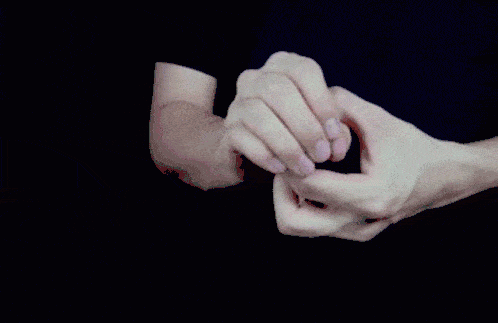Magic tricks, from sleight of hand to mentalism, have fascinated humans for centuries. Researchers are also interested in magic tricks — not as a form of entertainment, but rather because they allow us to zoom in on the limitations of our perception. Turns out, humans are relatively easy to deceive with such tricks. Eurasian jays, on the other hand, are much keener.

The French drop — not just for humans
The French drop (or “Le Tourniquet) is one of the simplest tricks you can do. It’s essentially a sleight of hand trick used to vanish a small object, most commonly a coin or a ball. It works like this: you hold the object between the thumb and your first two fingertips. You show it to the spectators, and then appear to use your other hand to take it away — but you don’t. The object is palmed in your first hand.
Although it’s been done for a very long time, it’s still remarkably effective. I’ve just explained how it works, you should know what to expect, and yet, when you see it in action, it still kind of works:

But jays are better than humans at not getting deceived.
“Results from palming and French drop experiments suggest that Eurasian jays have different expectations from humans when observing some of these effects. Specifically, Eurasian jays were not deceived by effects that required them to expect an object to move between hands when observing human hand manipulations,” the researchers write.
To test the birds’ perceptual blind spots, a team of researchers at the University of Cambridge taught six Eurasian jays to peck on a human fist to receive a treat in the hand. If the bird chose the correct hand, they got a treat. If they missed, they got nothing. They tested the birds with three magic tricks: the above-described French drop, the palm transfer (which works by hiding an object in the palm), and the fast pass (which works by passing the object so fast between hands that the watcher loses track of it).
Jays were chosen because, alongside several corvid species, they seem to be one of the smartest species of birds and they also use trickery to keep other animals from stealing their food stores.
The researchers tested the magic tricks on the birds multiple times, keeping track of their success rate. They then ran the same test with human volunteers online. Similar to humans, jays were misled by magic effects that utilize fast movements. However, the birds were significantly better at keeping track of the treat during palming and the French drop tricks.
“We demonstrate that, similar to humans, Eurasian jays are susceptible to magic effects that utilize fast movements. However, unlike humans, Eurasian jays do not appear to be misled by magic effects that rely on the observer’s intrinsic expectations in human object manipulation,” the researchers led by Elias Garcia-Pelegrin write in the study.
It’s not clear just how to interpret this finding in evolutionary terms. However, it seems that magic tricks can indeed provide an insightful methodology to investigate perception and attention shortcomings in human and nonhuman animals. It seems that jays have different expectations than humans, and also different perception abilities.
The end goal for researchers is to develop custom-made magic tricks that can help us better understand how we and other animals see the world. This is an avenue that has been recommended by Garcia-Pelegrin since last year, when he published a paper noting that magic tricks can “prompt the comparison of behavioral reactions among diverse species, in which magic effects might exploit similar perceptive blind spots and cognitive roadblocks.”
Journal Reference: Exploring the perceptual inabilities of Eurasian jays (Garrulus glandarius) using magic effects, Proceedings of the National Academy of Sciences (2021). www.pnas.org/cgi/doi/10.1073/pnas.2026106118









